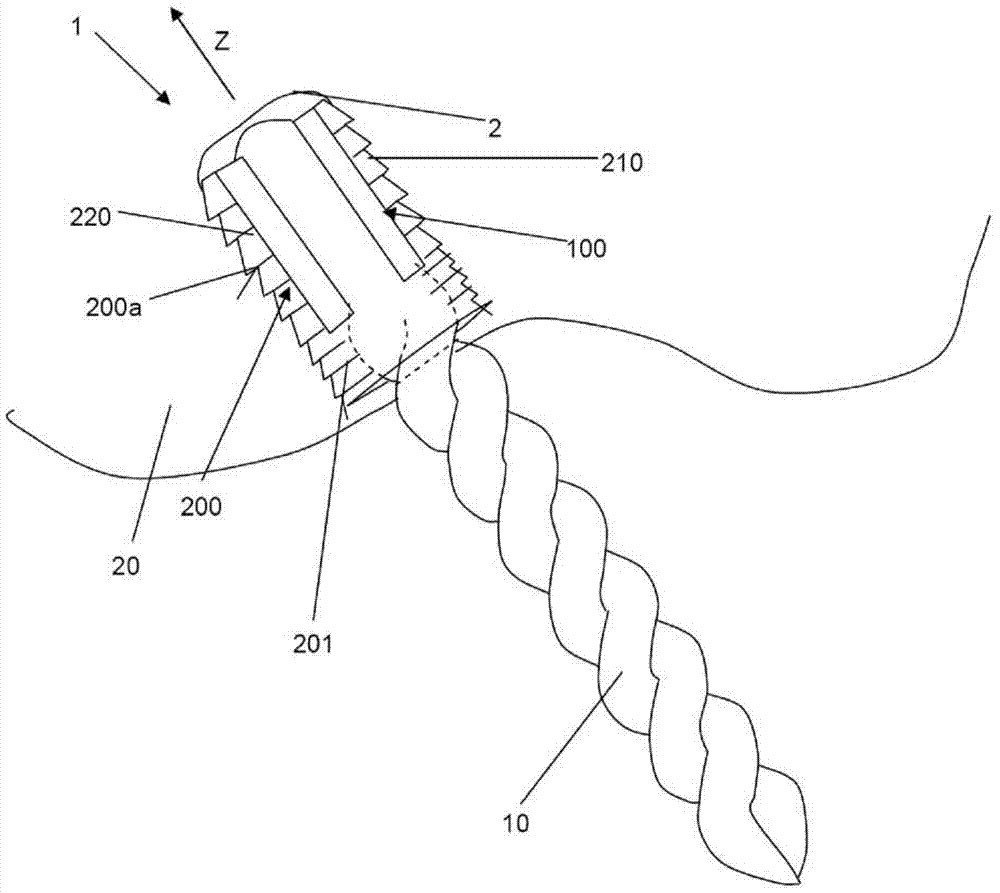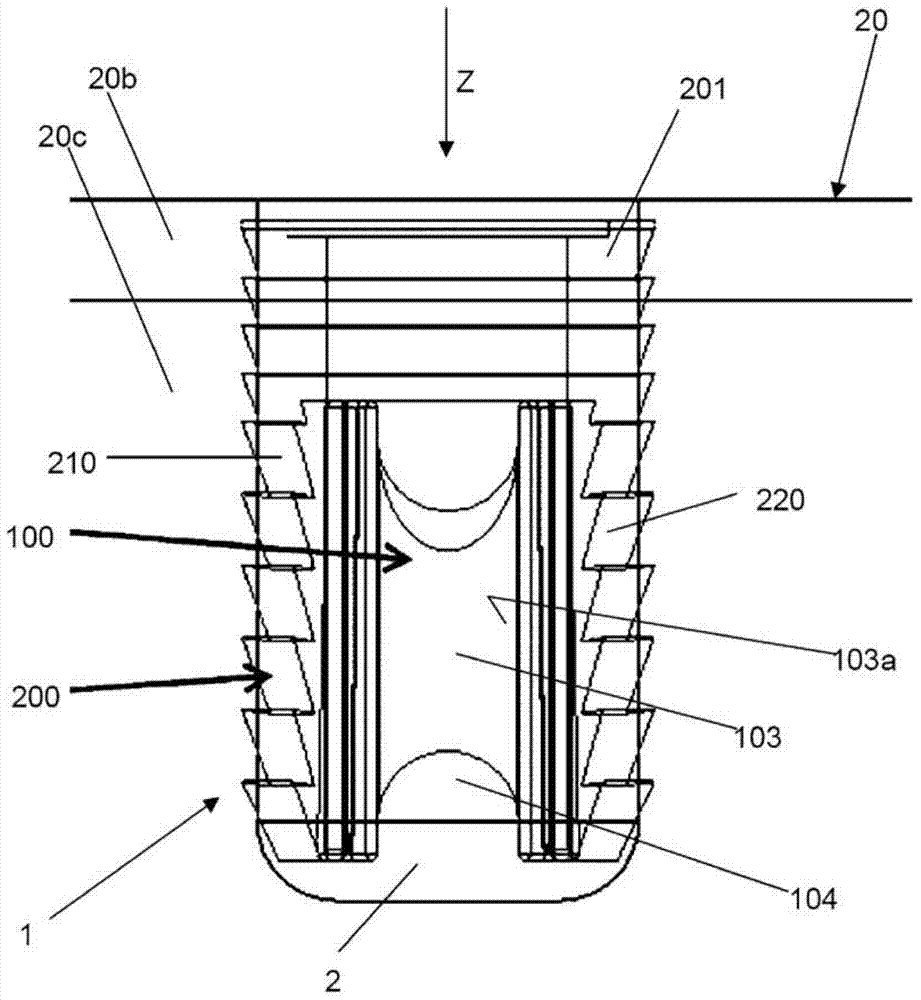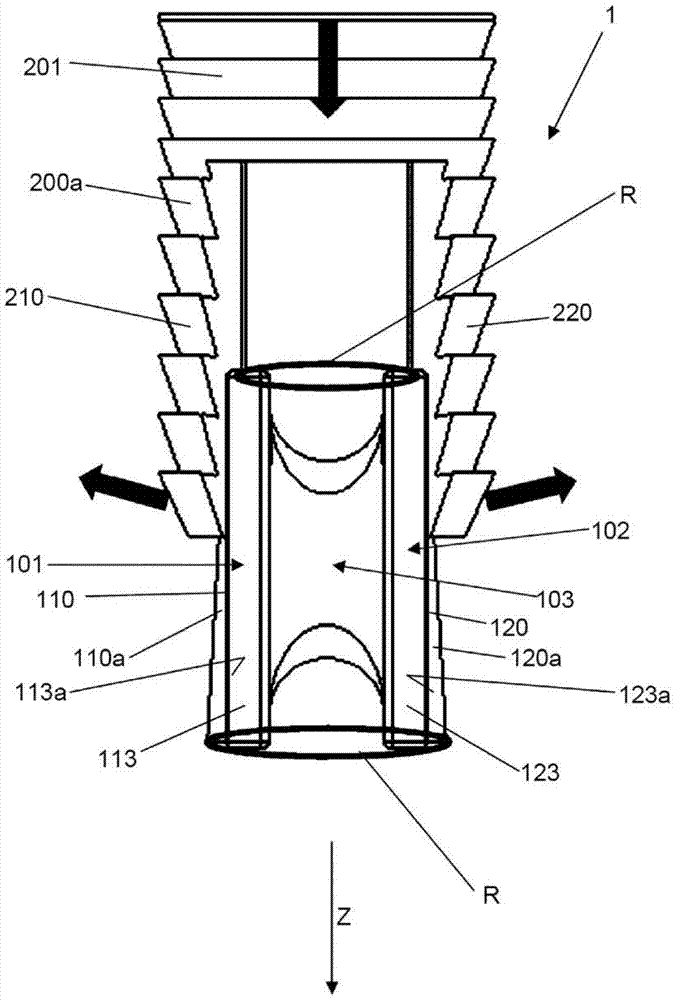Device for fixation of a flexible element, particularly a natural or synthetical ligament or tendon, to a bone
A technology of flexible components and equipment, applied in ligaments, muscles, applications, etc., can solve problems such as ignoring mechanical stability
- Summary
- Abstract
- Description
- Claims
- Application Information
AI Technical Summary
Problems solved by technology
Method used
Image
Examples
Embodiment Construction
[0101] figure 1 A device according to the invention is shown for the fixation of a flexible element 10 to, inter alia, a human bone 20, such as a distal femur, in case the flexible element 10 is used for ACL reconstruction. The device 1 according to the invention comprises an insert 100 for holding the flexible element 10 , in particular forming a ring around the insert 100 and an anchoring member 200 into which the insert 100 is inserted. When inserted into the bore hole 2 of said bone 20, the anchoring member 200 contacts the wall of the bore hole 2 with its toothed outer portion 200a. While the insert 100 is thus inserted into the anchoring member 200, the contact surfaces 112a, 113a, 122a, 123a of the insert 100 (see also Figure 6 and Figure 7 ) also contacts the wall of the borehole 2.
[0102] Preferably, the anchoring member 200 is made of or comprises polyetheretherketone (PEEK), while the insert 100 preferably comprises tricalcium phosphate (TCP). The anchoring ...
PUM
 Login to View More
Login to View More Abstract
Description
Claims
Application Information
 Login to View More
Login to View More - Generate Ideas
- Intellectual Property
- Life Sciences
- Materials
- Tech Scout
- Unparalleled Data Quality
- Higher Quality Content
- 60% Fewer Hallucinations
Browse by: Latest US Patents, China's latest patents, Technical Efficacy Thesaurus, Application Domain, Technology Topic, Popular Technical Reports.
© 2025 PatSnap. All rights reserved.Legal|Privacy policy|Modern Slavery Act Transparency Statement|Sitemap|About US| Contact US: help@patsnap.com



